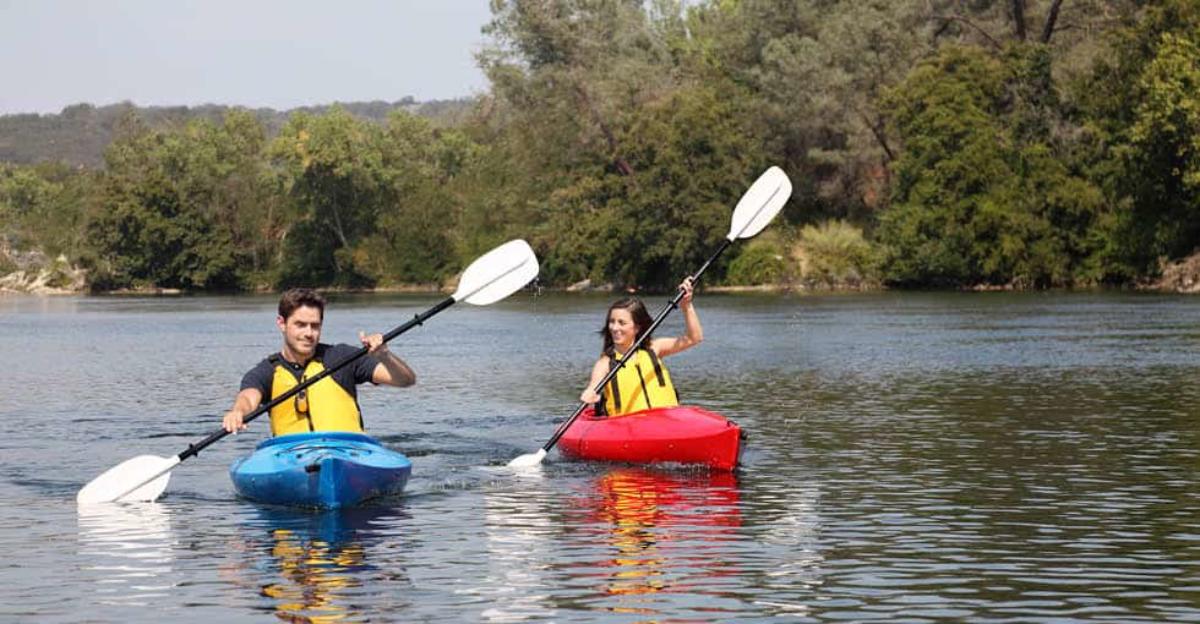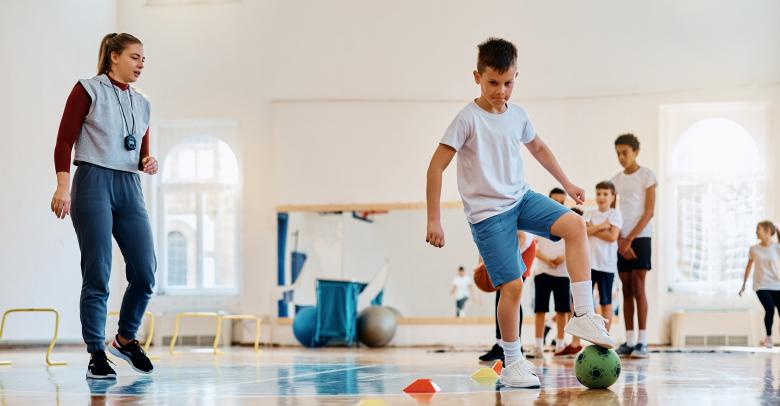By: Taralyn (Tari) Garner, NBCT, CAPE, Central District Teacher of the Year
Teaching outdoor adventure activities can be an amazing experience for your students, and outdoor adventure is appropriate for any grade level. You can teach outdoor adventure activities with some of the equipment you already have tucked away in your storage closet, a creative mindset, and a willingness to think outside the box. Then you and your students can get started on your adventure!
How you can starting developing an outdoor adventure activity, unit or class:
1. Read the research and determine why you want to teach outdoor activities and expected outcomes. You will find the research strongly supports outdoor adventure programming and the positive effects on students. My experience at the high school level aligns with the research showing significant increases in attendance and student engagement.
2. Reflect on your current situation and assess next steps based on curriculum, resources and facilities. What will work best for your students and your situation? Meet with your fellow instructors and department/school leaders to evaluate any required changes in policy or processes prior to adding a unit or developing a new course. Discern alignment with State and National Standards.
3. Resources available to you in determining what to teach. Here is a short list to get you started:
- State Parks Association
- Department of Conservation
- Professional fishing and hunting staff members
- Local businesses that love to share information and resources i.e. Cabela’s, Bass Pro Shop, Orvis Shop, Bike Shop, Hiking Shop, etc.
- Community members and family members that participate in outdoor activities
- Trout Unlimited, Quail Forever, Pheasants Forever, Ducks Unlimited, Greenpeace International, Friends of the Earth and other non-profit organizations
You are ready to start planning and I will help you get started by sharing information about KAYAKING, one of my favorite activities to teach!
I love kayaking and enjoy sharing my passion with my students. I typically have one or two students in each of my classes that have kayaked before, so this is a fun, unique, and challenging activity. Most of the students have very little (or zero) prior experience and/or knowledge and are excited to learn something new. The research strongly supports the benefits of teaching outdoor activities, like kayaking, stating that participation in outdoor adventure activities encourages students to be lifelong active and healthy adults!
Don’t have kayaks? No problem! I will share some innovative ideas for teaching kayak skills without ever getting in a boat. I teach basic skills in our kayaking unit, including: forward stroke, backward stroke, draw stroke, drop paddle turn, and a sweeping turn. I like to teach the skills in an indoor teaching space prior to advancing to an aquatic center or lake. You will need boats to practice skills in the pool or lake, but for the indoor teaching space…try mega scooters and indoor kayak paddles.
Set up an obstacle course using bosu trainers or large buckets as boulders and design a river that runs the length of your teaching space. You can also tandem the scooters together mimicking a tandem kayak, which encourages student cooperation and teamwork. Shoot a video on a wall in your teaching space of kayakers traversing a lake or river and have students follow the same strokes as the kayakers. Include nature music over a sound system with sounds of peaceful open water and video of the lake when teaching basic strokes, then progress to the sounds of swift running water with quick and constant changes in strokes to accompany the river video.
My class progresses to the pool for next steps, where students can practice and evaluate skills in small groups before completing a skill assessment. The pool kayaks are donated or loaned for instruction purposes at no cost. Our State Park association sponsors a field trip to the lake for our class providing advanced instruction, kayaks, and funding for the trip.
I hope this blog helps you reflect on how you can teach Outdoor Adventure Activities in your school! Stay tuned for future blogs about teaching Outdoor Adventure Activities.






Outdoor adventures are crucial for a child’s overall development. The article does an excellent job of highlighting the significance of instilling a love for nature and outdoor activities in education.